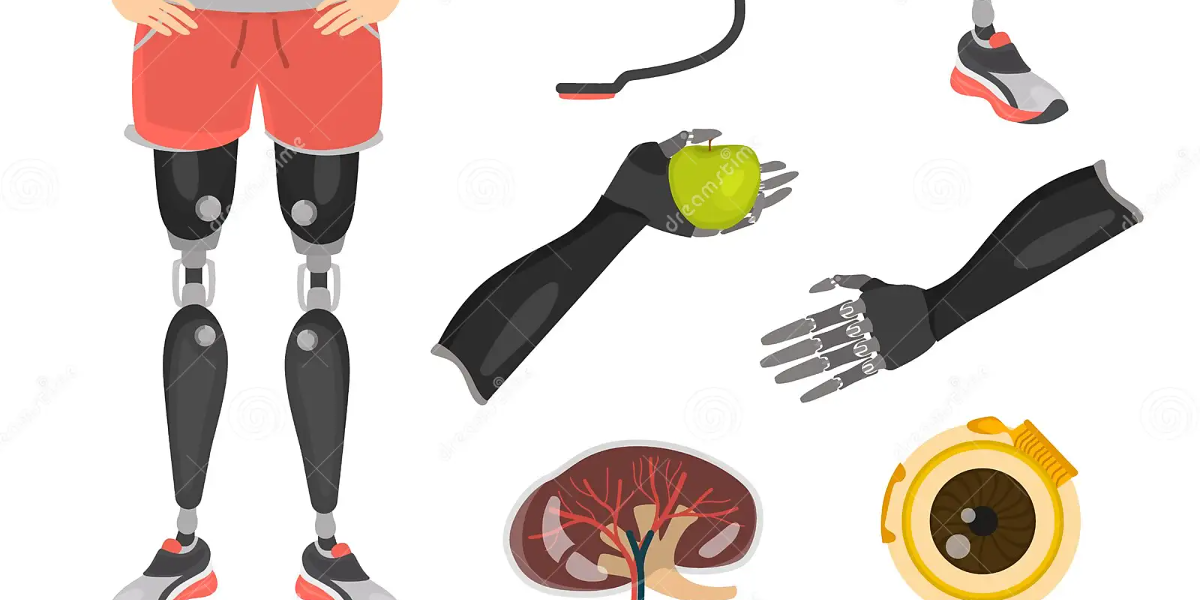In the realm of current medication, the turn of events and use of fake organs stand as a demonstration of human creativity and development. For quite a long time, the journey to recreate the complicated elements of our indispensable organs has been a determined test. Today, with propels in clinical innovation, we end up on the cusp of another period, where fake organs offer desire to those needing life-saving transfers. This article digs into the captivating universe of counterfeit organs, investigating their set of experiences, current abilities, future potential, and the moral contemplations they raise.
A Concise History of Counterfeit Organs
The historical backdrop of counterfeit organs is an embroidery woven with strings of development and need. It starts hundreds of years prior when imitating human organs originally flourished. In the seventeenth 100 years, the idea of a counterfeit heart was thought about, and in 1935, the main heart-lung machine was created to assume control over these imperative capabilities during cardiovascular medical procedures briefly. These early undertakings established the groundwork for the counterfeit organs we see today.

The Province of Counterfeit Organs Today
Quick forward to the current day, and we find an expanding field of counterfeit organs with a large number of uses:
Counterfeit Hearts: Maybe the most perceived of fake organs, the counterfeit heart has made considerable progress from the earliest models. Present day gadgets, like the SynCardia transitory Complete Counterfeit Heart (TAH), are utilized as a scaffold to transplantation for patients anticipating a heart relocate. Also, gadgets like the AbioCor All out Fake Heart mean to act as long-lasting substitutions.
Fake Kidneys: The improvement of counterfeit kidneys, frequently alluded to as hemodialysis machines, has been instrumental in treating patients with end-stage renal illness. These machines channel waste and overabundance liquids from the circulatory system, giving life-saving help to those whose kidneys have fizzled.
Fake Livers: While completely recreating the mind boggling elements of the human liver remaining parts an imposing test, counterfeit liver help gadgets can assist patients with intense liver disappointment by briefly aiding detoxification and utilization of poisons.
Counterfeit Pancreases: In the domain of diabetes the executives, fake pancreas frameworks, otherwise called shut circle insulin conveyance frameworks, consolidate ceaseless glucose observing with robotized insulin conveyance. They expect to keep up with blood glucose levels inside a sound reach, giving help to people type 1 diabetes.
Counterfeit Lungs: Fake lung gadgets, or extracorporeal layer oxygenation (ECMO) frameworks, briefly assume control over the job of the lungs by oxygenating the blood and eliminating carbon dioxide. These are basic instruments for patients with extreme respiratory disappointment.
Counterfeit Corneas: The improvement of fake corneas has been a distinct advantage for people experiencing corneal visual impairment. These counterfeit corneas can reestablish vision and deal desire to the individuals who might somehow confront an existence of murkiness.
Challenges and Moral Contemplations
While the present status of counterfeit organs is surprising, there are critical difficulties and moral contemplations that go with their turn of events and use.
Intricacy: Repeating the mind boggling elements of human organs is an impressive undertaking. Numerous counterfeit organs, while life-saving, can to some degree impersonate the full capacities of their regular partners.
Biocompatibility: Guaranteeing that fake organs are viable with the human body stays a test. The gamble of safe dismissal and other antagonistic responses should be tended to.
Asset Portion: The accessibility of counterfeit organs brings up issues about asset distribution. Who ought to approach these life-saving advances, and how might they be dispersed?
Cost: The turn of events and utilization of fake organs can be costly. This suggests conversation starters about reasonableness and availability for the people who need them.
Moral Situations: Choices with respect to when to use counterfeit organs, as well as end-of-life contemplations, can be morally intricate. For instance, choosing to eliminate life-supporting innovation or deciding the models for organ relocate qualification.
Relocate Lack: While fake organs give life-saving other options, they don’t wipe out the squeezing need for organ benefactors. The lack of organs for transplantation stays a critical issue.
The Fate of Counterfeit Organs
Looking forward, the fate of counterfeit organs seems promising, with a few critical patterns and improvements:
Bioengineered Organs: The field of regenerative medication holds tremendous potential. Specialists are investigating the formation of organs utilizing a patient’s own cells, diminishing the gamble of insusceptible dismissal. This innovation is still in its early stages yet shows extraordinary commitment.
Man-made consciousness: Fake organs are progressively incorporated with computerized reasoning and AI calculations. These advances can enhance the presentation of these gadgets and anticipate possible issues.
Nanotechnology: The utilization of nanoscale materials and gadgets is turning out to be more common in the advancement of counterfeit organs, considering more prominent accuracy and biocompatibility.

3D Printing: 3D printing innovation is changing the development of counterfeit organs by taking into account exact customization to match a singular’s interesting life systems.
Telemedicine: Remote checking and telemedicine assume a pivotal part in counterfeit organ emotionally supportive networks. Patients can be checked and get care from the solace of their homes, lessening the requirement for regular clinic visits.
Customized Medication: Counterfeit organs are progressively custom-made to the singular patient, expanding their viability and lessening the gamble of inconveniences.
End
The turn of events and usage of fake organs mark a huge accomplishment in the realm of medication, offering trust and life-saving options for people experiencing organ disappointment. These surprising advances keep on developing, with the commitment of more noteworthy biocompatibility, customization, and moderateness later on.
Notwithstanding, moral contemplations, asset designation, and the continuous requirement for organ givers stay significant variables in the field of counterfeit organs. As we push ahead, the clinical local area and society in general should wrestle with these difficulties while embracing the extraordinary capability of these life-saving developments. The fate of fake organs is an interesting excursion, loaded up with potential outcomes that can improve and expand human existence.
